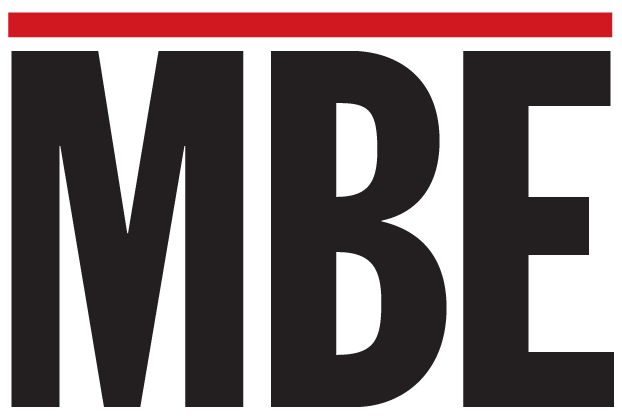
Blink and you’re halfway through the year. And you’re wondering, “Am I actually making progress?”
You’re juggling multiple projects and started the year with a full planner and high hopes. But as the summer sun rolls in, you realize you had no idea if you were actually moving forward—or just staying busy.
If that sounds familiar, you’re not alone.
The halfway mark isn’t just a milestone. It’s a mirror. It offers the perfect moment to pause, reflect, and get real with yourself, not to feel bad, but to get clear.
Here’s a 5-step mid-year business check-in to help you reset your strategy, refocus your energy, and realign your goals so you finish the year strong.
1. Revisit Your Business Goals and Metrics
Before you map out your next move, it’s time to revisit the goals you set in January—or the ones you thought about but never quite wrote down.
Research indicates that a surprisingly low percentage of small business owners consistently track their goals with formal strategies:
- Only 15 percent of small business owners report fully documenting a business strategy in the past year.
- About 10 percent of small businesses with growth targets track those goals in real time.
- A significant portion, 27 percent, developed no strategy at all.
However, small business owners who set and consistently track their goals are significantly more successful.
- Businesses that set and track their goals hit at least some of their goals 96 percent of the time, and 41 percent hit all of their goals—nearly double the rate of those who do not track their progress regularly.
- Businesses that review their goals every two weeks are 33 percent more successful at hitting their targets.
- Small businesses that set and track goalscan increase productivity by 16 percent and output by 13 percent.
So, how do you make sure you join the ranks of those successful business owners who hit some or all of your business goals. You start simple:
- What did you say you wanted to achieve this year?
- What have you actually done?
- What surprised you—good or bad?
Take a look at the numbers you’ve possibly been avoiding: your revenue to date, your expenses, and the number of client leads you’ve converted. It might not be easy. But it will keep you honest. And that’s where growth starts.
Here’s your list of things to review:
- Revenue year-to-date compared to your annual goal
- Expenses and profit margins
- Monthly or quarterly income trends
- Time spent on client work vs. strategy or growth
- Marketing and audience engagement stats
2. Audit What’s Actually Working
You’ve probably done a lot in six months. But has it moved the needle?
This part is all about pattern recognition. Instead of guessing, gather data, from your calendar, your analytics, your sales tracker, and your gut.
Ask yourself:
- What products or services brought in the most revenue?
- What felt easy and energizing?
- What felt hard, draining, or confusing?
- What efforts got attention or traction (even if they didn’t lead to immediate sales)?
For some business owners, this means realizing that they had been pushing one revenue-generating program all year, when another one is actually their real income driver.
The takeaway? Let go of “shoulds” and refocus on what’s moving your business forward.
3. Refocus on Your Best Offer(s)
Now that you know what’s working, it’s time to refocus your energy.
Not every idea is meant to be pursued all year. Some need to be paused, others pivoted, and a few? Shelved entirely.
Use the Keep / Kill / Pivot method, which is a simple decision-making framework you can use to evaluate and prioritize your business activities, products, or ideas.
- Keep: Offers that are profitable and aligned with your strengths
- Kill: Anything that drains your time, isn’t selling, or no longer feels right
- Pivot: Offers that might need a fresh name, niche, or format
For example, cut any underperforming products and use that time to revamp your products that perform well with more clarity and better boundaries.
Don’t be afraid to simplify. Focus is a growth strategy.
4. Clean Up Your Systems
Systems are how your business runs when you’re not looking. And a messy system creates a messy mind.
Do a quick mid-year operations audit:
- Is your scheduling tool working for you—or against you?
- Are your invoices and follow-ups going out on time?
- Can someone else step in and help if needed?
If you feel overwhelmed, look at what you’re doing manually that could be automated, templatized, or delegated.
Some examples:
- Set up email templates for inquiries and onboarding
- Create standard checklists for deliverables or client projects
- Use a task management tool (like ClickUp, Notion, or Trello) to track your week
This is where small tweaks lead to big peace of mind. Automating onboarding emails can save you hours each week. And a bonus is that it gives clients a better experience.
5. Set a Clear 90-Day Plan
Now comes the reset.
Forget the rest of the year for a second. Focus on the next 90 days. Three months is long enough to make progress and short enough to stay focused.
Ask yourself:
- What are 1 to 3 big goals I want to hit by the end of the quarter?
- What’s the single next step I can take this week to move closer?
- Who can help hold me accountable?
Use SMART goals (Specific, Measurable, Achievable, Relevant, and Time-bound) or OKRs (Objectives and Key Results) to make them actionable.
Maybe set one big Q3 goal: land five new retainer clients by September. Then build a weekly outreach rhythm, refine your proposal process, and schedule two CEO check-ins per month.
You’re Not Behind—You’re Right on Time
If you’ve been stuck in the weeds, now is your chance to rise above it. Not to start over—but to start with more clarity.
This mid-year check-in is your moment to pause, realign, and move with purpose.
Because you don’t need more time; you need a better direction.
You’ve still got six months left. Make them count.













